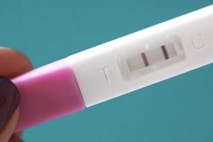
New Archbishop of Canterbury warns of danger in legalizing assisted suicide
Nancy Flanders
·
Guest Column·By Alexandra DeSanctis
Why abortion supporters play rhetorical shell games with ‘late-term abortion’
(National Review) Abortion-rights supporters and their media allies have dedicated much of the last week and a half to careful parsing of the phrase “late-term abortion.” Their intent focus on word choice says a lot about the strength of their arguments.
First with New York’s legalization of abortion up until birth, then with the proposed abortion expansion in Virginia, and finally with Virginia governor Ralph Northam’s comments in defense of infanticide, factions within the Democratic party have put their abortion extremism on full display.
Their national party leaders have done little to push back. Democratic politicians in the House and Senate are currently obstructing a bill, the Born-Alive Abortion Survivors Protection Act, that doesn’t restrict abortion rights but would extend legal protection to infants born alive after attempted abortion procedures. Not a single Democratic leader has offered comment on what Northam said last week.
READ: There’s no way to make late-term abortion seem better, media. Just stop.
And all of this news was met with little more than a yawn from mainstream reporters and commentators. Northam’s appalling comments were either ignored or dismissed as having been selectively edited, and the New York Times and Washington Post, among others, covered Northam and the New York and Virginia bills as an example of “Republicans seizing” on liberal positions to craft a political win.
But when President Trump mentioned the Democrats’ abortion extremism in his State of the Union address, media outlets leapt to attention. The Times, CNN, and ABC News all published articles attempting to debunk Trump’s comments, dedicated almost entirely to misrepresenting the substance of the legislation in question and deconstructing the president’s use of the phrase “late-term abortion.”
The subtitle of the Times piece, for example, is “Trump used scary imagery that scientists say is incorrect.” The author promises to explain “the terms and the science” of the issue, and asks “What is late-term abortion?” but her answer leaves much to be desired:
Late-term abortion is a phrase used by abortion opponents to refer to abortions performed after about 21 weeks of pregnancy. It is not the same as the medical definition obstetricians use for “late-term,” which refers to pregnancies that extend past a woman’s due date, meaning about 41 or 42 weeks. Contrary to Mr. Trump’s claim, late-term abortions do not allow “a baby to be ripped from the mother’s womb moments before birth.”
The other two articles are similarly unhelpful. ABC News medical correspondent Jen Ashton offers this: “As a board-certified Ob-Gyn, I wish people understood that the term ‘late-term abortion’ is not remotely a medical term. In fact, even Ob-Gyns don’t know what people are referring to when we hear this term.”
CNN, meanwhile, quotes two doctors, one of whom notes that “the phrase ‘late-term abortion’ is medically inaccurate and has no clinical meaning. In science and medicine, it’s essential to use language precisely.” The other observes the following (contradicting Roe v. Wade in the process): “In obstetrics, we don’t divide pregnancies into terms. ‘Late term’ is an invention of anti-abortion extremists to confuse, mislead and increase stigma. The appropriate language is ‘abortions later in pregnancy.’”
But despite having “scientists” on hand to explain the medically accurate details of abortion after viability, not one of these pieces offers even a single sentence describing what “abortions later in pregnancy” actually do. Instead, they quibble over terminology.
Why?
Why does the Times answer the question “What is late-term abortion?” with a digression on word choice? Why does the author insist that babies aren’t “ripped from the mother’s womb moments before birth,” as Trump said, without offering a contrary explanation of what post-viability abortions look like? Why do several doctors promise that they have the expertise to debunk pro-life arguments but withhold the clinical, medical details of what happens when a doctor aborts a viable fetus?
The reason should be obvious. They don’t want to talk about it. They obscure abortion with euphemism, as the Democratic party has always done, because it is easier to hide behind nitpicking discussions of whether “late-term abortion” is a precise medical term than it is to admit to what happens in an abortion after 24 weeks and continue to defend it.

The abortion-rights movement used this tactic during the debate over the federal partial-birth abortion ban, claiming that “partial-birth abortion” isn’t a medical term — call it an “intact dilation & extraction,” they insisted. But what does it matter? The specific label used to reference these grotesque procedures matters far less than the horrific truth of what these procedures do. Those who would defend them pivot to discussions of entirely arbitrary terminology precisely because they want to avoid and obscure that truth. These rhetorical shell games are their last refuge.
Perhaps proponents of abortion are right to say that Trump used “scary imagery.” But a scientist describing an abortion after 24 weeks would be much more frightening — and they know it.
Editor’s Note: This article was published at National Review and is reprinted here with permission.
“Like” Live Action News on Facebook for more pro-life news and commentary!
Live Action News is pro-life news and commentary from a pro-life perspective.
Contact editor@liveaction.org for questions, corrections, or if you are seeking permission to reprint any Live Action News content.
Guest Articles: To submit a guest article to Live Action News, email editor@liveaction.org with an attached Word document of 800-1000 words. Please also attach any photos relevant to your submission if applicable. If your submission is accepted for publication, you will be notified within three weeks. Guest articles are not compensated (see our Open License Agreement). Thank you for your interest in Live Action News!

Nancy Flanders
·
Politics
Rebecca Oas, Ph.D.
·
Politics
Calvin Freiburger
·
Human Interest
Melina Nicole
·
Issues
Wesley J. Smith
·
Issues
Michael J. New
·
Guest Column
Alexandra DeSanctis
·
Guest Column
Alexandra DeSanctis
·
Guest Column
Alexandra DeSanctis
·
Analysis
Alexandra DeSanctis
·
Analysis
Alexandra DeSanctis
·